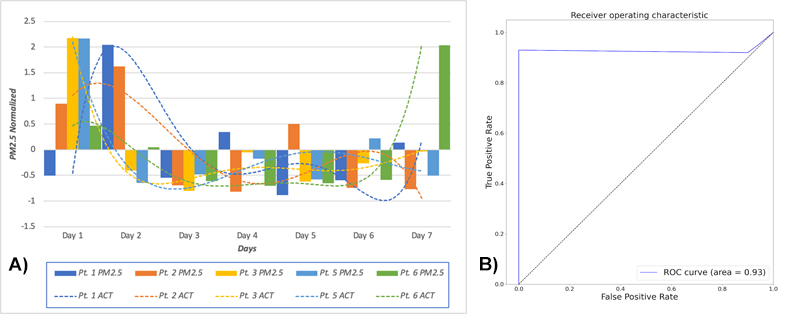Abstract
Background: Asthmatics experience a high exacerbation possibility, often precipitated by exposure to indoor air pollutants.
Aims: To utilise recurrent neural networks (RNNs) and indoor air quality (IAQ) sensors to inform users of anticipated high levels of air pollutants which may exacerbate their asthma symptoms.
Methods: We monitored 10 asthma patients in their homes for 12 weeks, collecting asthma control tests (ACT), pulmonary function tests, and IAQ sensor measurements for pollutants (Particulate matter (PM2.5), temperature/humidity, volatile organic compounds, and formaldehyde). Outdoor air quality levels were also monitored. We trained RNNs using 403,200 data points that included patient information and pollutant measurements. The trained models generated a 30-minute forecast, alerting patients to potential triggers that could worsen their condition. We employed statistical data analysis to identify pollutants correlated with deteriorated ACT results. (Fig. 1A).
Results: Our air pollution prediction model achieved 97% accuracy and a 0.93 AUC after further validation for personalisation (Fig. 1B).
Conclusion: Our model accurately predicts indoor pollutant peaks 30-minutes in advance, enabling individuals to avoid health-threatening triggers and intervene early to prevent asthma exacerbations.
Fig. 1: A) Analysis for ACT vs PM2.5 B) ROC of RNN results
